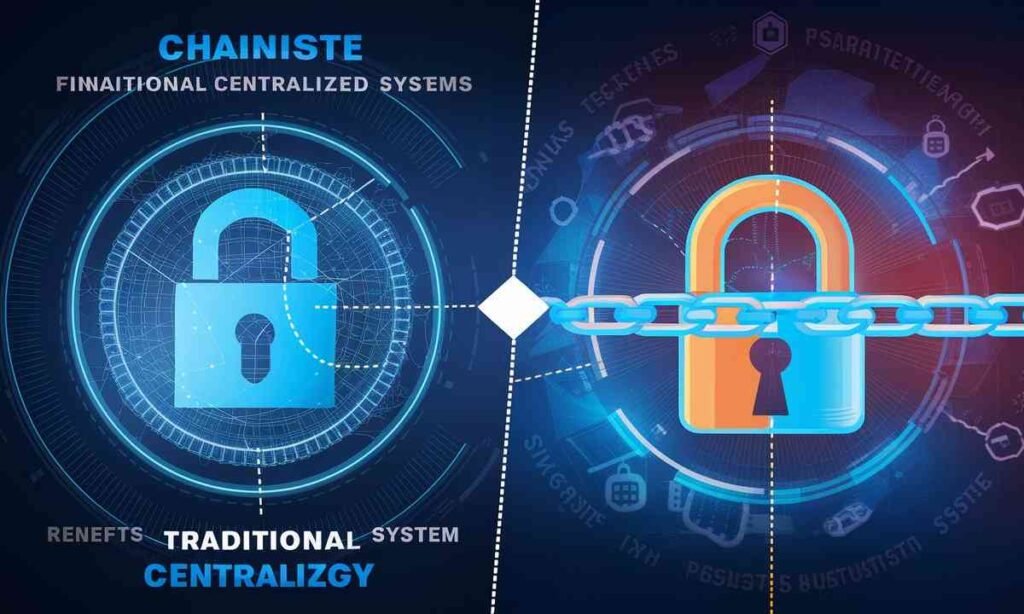Table of Contents
Chainiste is a term that blends the concepts of “chain” and “iste,” representing a significant innovation in the technological landscape, particularly within blockchain technology.
In this article, we delve into the multifaceted aspects of Chainiste, exploring its origins, applications, and impact.
By understanding the intricacies of Chainiste, readers will gain insights into its transformative potential in various industries.
Continue reading this article to expand your knowledge about the fascinating world of Chainiste and its implications for the future.
Historical Background And Key Features
Origins Of Chainiste: Chainiste traces its roots back to the emergence of blockchain technology, serving as a decentralized ledger system for digital transactions.
Over time, it has evolved from its early beginnings into a robust platform with advanced features.
Evolution Of Key Features: Initially conceived as a means to ensure secure and transparent transactions,
Chainiste has evolved to encompass key features such as decentralization, robust security protocols, and innovative consensus mechanisms.
Applications Of Chainiste

Transformation In Finance And Banking: Chainiste has revolutionized financial systems by facilitating secure and transparent transactions, reducing costs,
And eliminating intermediaries. Its applications range from peer-to-peer transactions to asset tokenization.
Enhancing Supply Chain Management: In supply chain management, Chainiste offers transparency and traceability, revolutionizing the way goods are tracked from production to consumption.
It minimizes fraud, reduces inefficiencies, and enhances trust among stakeholders.
Impact On Healthcare: Chainiste has transformative implications in healthcare, ensuring secure and interoperable exchange of patient data,
Streamlining processes, and improving patient care. Its decentralized nature enhances data security and privacy.
Revolutionizing Real Estate: Real estate transactions benefit from Chainiste’s digitization of assets, automation of contracts, and transparent ownership records.
It simplifies processes, reduces friction, and enhances trust among buyers and sellers.
Understanding Blockchain Technology

Basics Of Blockchain: Blockchain, the underlying technology of Chainiste, is a distributed ledger that records transactions in a secure and transparent manner.
Each block contains a cryptographic hash of the previous block, ensuring tamper-proof records.
Relationship With Chainiste: Chainiste builds upon blockchain principles, leveraging its decentralized architecture and cryptographic security for various applications beyond cryptocurrency transactions.
Benefits And Challenges
Advantages Of Chainiste: Chainiste offers transparency, immutability, and efficiency compared to traditional systems, reducing costs and enhancing trust.
Its decentralized nature eliminates single points of failure and reduces the risk of censorship.
Challenges Facing Chainiste: Scalability issues, regulatory uncertainties, and energy consumption concerns pose challenges to Chainiste’s widespread adoption.
Overcoming these hurdles is crucial for realizing its full potential.
Current Trends And Future Prospects
Adoption Trends: Despite challenges, Chainiste continues to gain traction across industries, driven by increasing awareness and demand for decentralized solutions.
Adoption is expected to grow as technology advances and regulatory frameworks evolve.
Technological Advancements: Ongoing research and development efforts focus on addressing scalability and energy consumption issues,
Paving the way for further innovation and adoption of Chainiste.
Comparison With Traditional Systems

Advantages Over Traditional Systems: Chainiste offers greater security, transparency, and efficiency compared to traditional centralized systems.
It eliminates the need for intermediaries, reducing costs and improving reliability.
Drawbacks Compared To Traditional Systems: However, Chainiste faces challenges such as scalability and regulatory uncertainties,
Hindering its integration into existing infrastructure. Addressing these challenges is essential for broader adoption.
Investment And Market Analysis
The market for Chainiste and associated technologies is witnessing exponential growth, driven by escalating investment and a surge in demand for decentralized solutions.
Projections paint a promising picture for the future of Chainiste and its ecosystem, highlighting the trajectory towards widespread adoption and integration.
Investors are increasingly acknowledging the transformative power of Chainiste, leading to heightened investment in various projects and initiatives aimed at harnessing its capabilities for digital transformation.
This trend underscores the growing recognition of Chainiste’s potential to revolutionize industries and reshape the digital landscape.
Educational Resources And Community Engagement
Learning Resources: Numerous online courses, books, and certification programs provide opportunities for individuals to deepen their understanding of Chainiste and blockchain technology.
Community engagement is crucial for fostering collaboration and innovation.
Conclusion
In conclusion, Chainiste represents a paradigm shift in technology, offering decentralized solutions that prioritize transparency, security, and efficiency.
Despite challenges, its potential to drive digital transformation and reshape industries is undeniable.
As adoption grows and technology evolves, Chainiste holds the promise of a more decentralized and resilient digital economy.
FAQs
What sets Chainiste apart from traditional centralized systems?
Chainiste offers greater security, transparency, and efficiency compared to traditional centralized systems.
Its decentralized nature eliminates single points of failure and reduces the risk of censorship, making it a preferred choice for many industries.
How does Chainiste contribute to the revolution in finance and banking?
Chainiste revolutionizes financial systems by facilitating secure and transparent transactions, reducing costs, and eliminating intermediaries.
From peer-to-peer transactions to asset tokenization, its applications in finance and banking are diverse and impactful.
What challenges does Chainiste face, and how are they being addressed?
Scalability issues, regulatory uncertainties, and energy consumption concerns pose challenges to Chainiste’s widespread adoption.
However, ongoing research and development efforts are focused on addressing these issues, ensuring the continuous improvement and evolution of Chainiste.
What are the current trends in Chainiste adoption, and what does the future hold?
Despite challenges, Chainiste continues to gain traction across industries, driven by increasing awareness and demand for decentralized solutions.
As technology advances and regulatory frameworks evolve, adoption is expected to grow, opening up new opportunities for innovation and integration.
How does Chainiste compare to traditional systems in terms of investment and market analysis?
The market for Chainiste and related technologies is experiencing rapid growth, fueled by increasing investment and demand for decentralized solutions.
Investors are recognizing the transformative potential of Chainiste, driving investment in projects and initiatives aimed at leveraging its capabilities for digital transformation.











